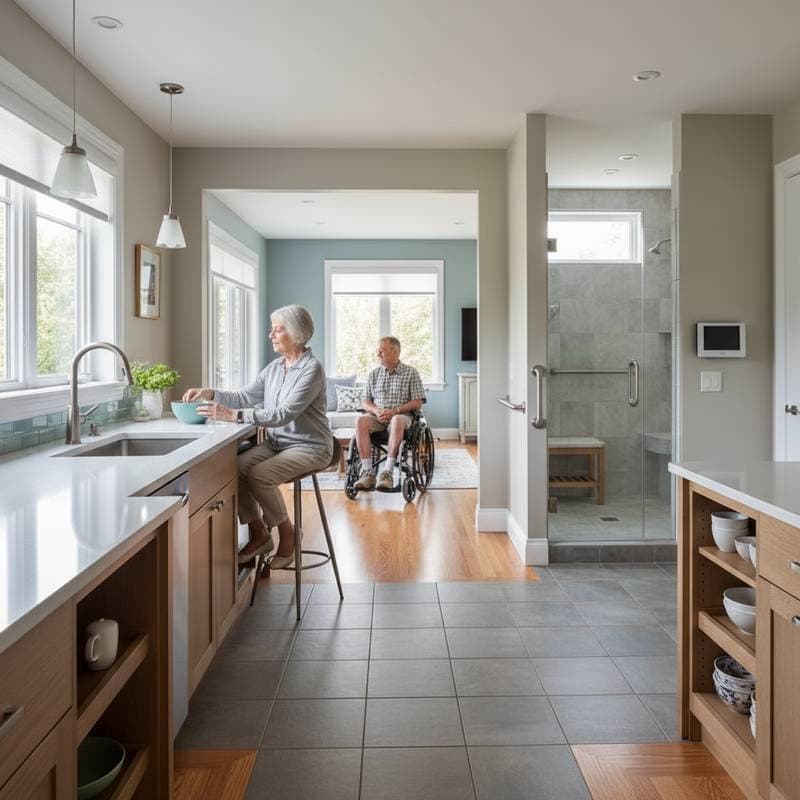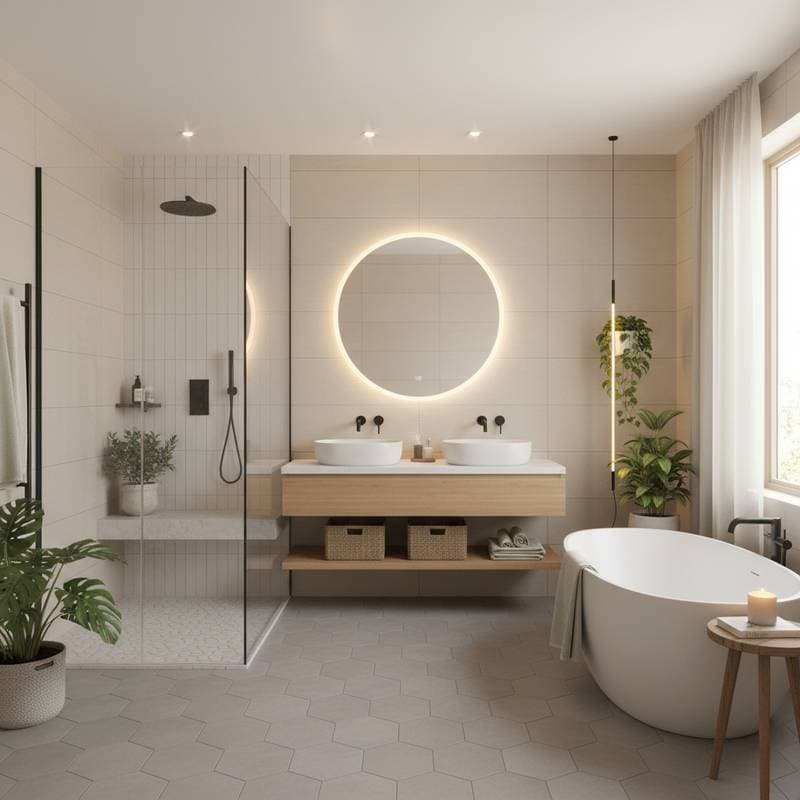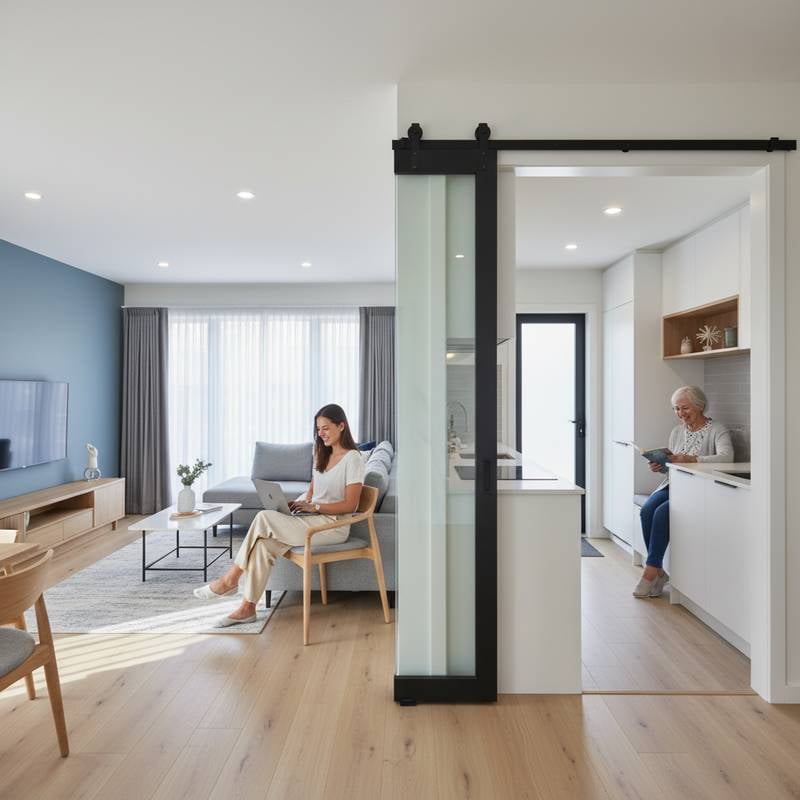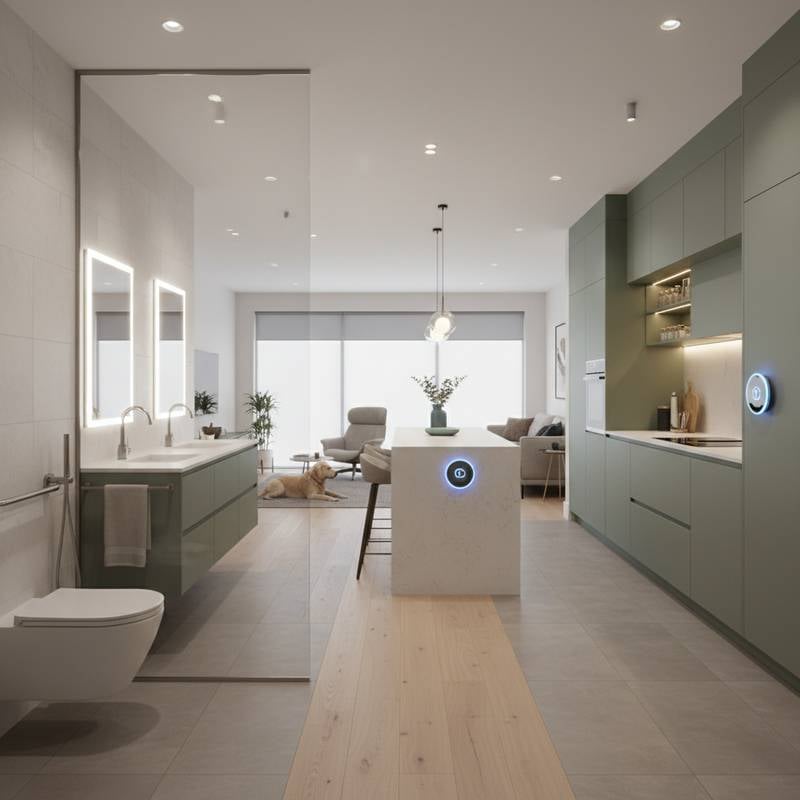Understanding Universal Design for Aging in Place
Universal design creates environments that accommodate users of all ages, abilities, and sizes without compromising aesthetics or functionality. This approach focuses on flexibility, simplicity, and intuitive use, allowing individuals to remain in their homes as they age. By incorporating these elements early, homeowners avoid the need for disruptive changes later.
Aging in place means living independently at home for as long as possible, supported by modifications that enhance safety and ease daily tasks. Common challenges include mobility limitations, reduced vision, or dexterity issues. Universal design addresses these proactively, promoting long-term comfort and reducing fall risks, which affect one in four adults over 65 annually.
Benefits extend beyond seniors to families with children or temporary injuries. Homes become more marketable, potentially increasing resale value by up to 10 percent through broad appeal. Implementation varies from minor adjustments to comprehensive renovations, with timelines ranging from days for simple updates to months for full projects.
Core Principles of Universal Design
Seven fundamental principles guide universal design, ensuring spaces work for everyone:
- Equitable use: Features serve diverse users without segregation.
- Flexibility: Options adjust to individual preferences and abilities.
- Simple and intuitive: Operations remain straightforward regardless of experience.
- Perceptible information: Communication occurs through multiple senses.
- Tolerance for error: Designs minimize hazards and accidental actions.
- Low physical effort: Tasks require minimal force or strain.
- Size and space for approach: Adequate room supports reach and maneuverability.
Applying these principles starts with assessing current home layouts. Consider traffic flow, lighting levels, and surface textures. Professional assessments, often available through local aging services, identify priorities based on personal needs.
Essential Home Modifications for Accessibility
Focus on high-impact areas like entrances, bathrooms, kitchens, and hallways to build a supportive environment.
Entryways and Hallways
Widen doorways to 32 inches minimum for wheelchair passage. Install lever-style handles at 36 to 42 inches high for easy operation. Add motion-sensor lighting to illuminate paths and prevent trips.
Ramps replace steps where feasible, with a 1:12 slope ratio for gradual inclines. Thresholds under 0.5 inches eliminate stumbling hazards. These changes cost 500 to 5,000 dollars, depending on site conditions, and take one to two weeks.
Bathrooms
Curbless showers with fold-down seats and handheld sprayers improve safety. Grab bars near toilets and showers provide stable support, installed at 33 to 36 inches from the floor. Non-slip flooring and higher toilets at 17 to 19 inches reduce bending.
Pocket doors save space, while vanities with open undersides allow knee clearance. Expect bathroom remodels to range from 5,000 to 25,000 dollars, completed in four to eight weeks. Test layouts with mockups to ensure comfort.
Kitchens
Lower counters to 34 inches for seated use, with pull-out shelves and lazy Susans for accessibility. Touchless faucets and rocker switches simplify controls. Appliances at mid-height, like wall ovens, minimize stooping.
Clear 48-inch paths around islands facilitate movement. These upgrades, costing 8,000 to 30,000 dollars, enhance daily routines and take six to ten weeks. Integrate smart technology, such as voice-activated lights, for added convenience.
DIY Projects to Get Started
Homeowners can handle basic updates without professional help, saving on labor costs.
Replace round doorknobs with levers, available at hardware stores for under 20 dollars each. Add non-slip mats in tubs and adhesive grab bars for quick reinforcement. Install adjustable-height showerheads and under-cabinet lighting using basic tools.
Brighten spaces with LED bulbs and task lighting over workspaces. These projects cost 100 to 1,000 dollars total and complete in a weekend. Always follow manufacturer instructions to maintain safety standards.
Cleanup and Disposal After Modifications
Proper disposal maintains a healthy workspace and complies with regulations.
Separate materials: Direct metal fixtures to recycling centers, which often accept them free. Bag drywall and tile fragments in heavy-duty plastic to contain dust, then transport to designated landfills.
Handle hazardous items like old fluorescent bulbs or wiring through local collection events. Vacuum surfaces with HEPA filters before new installations. Thorough cleaning prevents contaminants from affecting air quality during occupancy.
When to Hire a Professional
Certain modifications require expert skills to ensure safety and code compliance.
Engage a licensed contractor for structural work, including wall removals or door frame expansions. Relocating electrical outlets or plumbing demands certified technicians to avoid hazards. Installations like curbless showers, exterior ramps, or stair lifts fall into this category.
Professional projects typically cost 10,000 to 60,000 dollars, influenced by scope and location. Timelines span four to twelve weeks. Select contractors by confirming active licenses and insurance, obtaining detailed written bids with material lists, and reviewing references from comparable accessibility jobs. Inquire about warranties covering workmanship and products for one to five years.
Experts navigate building codes, such as ADA guidelines, and integrate features seamlessly. This prevents errors that could lead to injuries or failed inspections.
Practical Tips for Implementation
- Begin planning ahead of anticipated needs to integrate changes smoothly.
- Bundle accessibility enhancements with planned renovations, like kitchen updates, to economize on disruption and expenses.
- Simulate ergonomics by testing handle placements, counter clearances, and light angles with temporary setups.
- Select enduring materials, such as slip-resistant porcelain tiles or solid-surface counters, built to withstand heavy use over decades.
- Consult local regulations early; permits apply to ramps, wiring alterations, or pipe relocations in many areas.
These strategies optimize outcomes and align modifications with lifestyle goals.
Frequently Asked Questions
What exactly is universal design?
Universal design develops homes usable by individuals across all ages and abilities, featuring layouts and elements that integrate accessibility into everyday architecture.
Does universal design apply solely to older adults?
No, it serves broad audiences, from parents with infants to those healing from surgeries, fostering inclusive living.
Is a complete renovation necessary for accessibility?
Not necessarily. Incremental changes, such as lever handles, enhanced illumination, and support bars, yield significant improvements.
What clearance is required for wheelchair navigation?
Provide 36 inches for corridors and 60 inches for rotation spaces in key rooms like bathrooms and kitchens.
Will universal design boost property value?
Yes, by attracting diverse buyers and deferring upkeep expenses, it can elevate market appeal.
Which flooring options suit aging-in-place residences?
Choices like slip-resistant tiles, patterned vinyl, or short-nap carpets offer grip and softness underfoot.
Are permits needed for these modifications?
Yes, for alterations involving plumbing, electricity, or structures; verify with municipal authorities prior to commencement.
Sustaining Accessibility Over Time
Universal design investments promote enduring independence and ease within familiar surroundings. They diminish injury probabilities, streamline routines, and adapt to evolving requirements. From initial tweaks to extensive overhauls, strategic foresight and specialist input yield resilient enhancements.
Regular maintenance, such as checking grab bar security or updating lighting, preserves functionality. These adaptations not only safeguard well-being but also enrich quality of life across generations. Commit to universal design to cultivate a residence that evolves alongside you.











